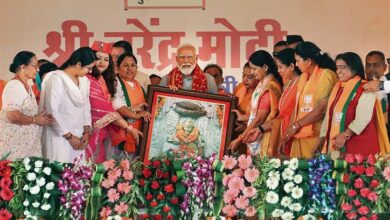Residents of Rakhigarhi provide DNA samples to the UP institution so they may trace their Harappan ancestry
In order to determine whether the people who live in Rakhigarhi village today and the people who lived in the area approximately 5000 years ago shared the same genetic makeup, the Birbal Sahni Institute of Palaeosciences (BSIP), located in Lucknow, has collected samples of the village’s residents and compared their DNA with skeleton extracts found at the village’s Harappan site cemetery.

Recently, BSIP scientists collected feces and saliva samples from twelve village residents. The samples will be compared to the DNA findings of a male skeleton that the Archaeological Survey of India (ASI) found at the location, according to sources.
The Tribune was informed today by a renowned scientist, Dr. Neeraj Rai, that the samples had indeed been taken from the area. We are now analyzing and looking through them. The findings of the comparison between the DNA samples of the present population and the individuals who lived here during the Harappan period would not be known for three or four months, he said.
Rakhigarhi’s Harappan period mounds have attracted historians and archaeologists from all over the globe since this was once thought to be one of the largest settlements in the Indus Valley Civilization. Two years before, during excavation, a skeleton was found at the site, and samples of it were gathered by the ASI.
According to previous sarpanch and archeology enthusiast Dinesh Sheoran, the locals were equally curious in their past. They didn’t show any interest in archaeologists’ work until around ten years ago. However, they are now fully aware of the discoveries made by archaeologists. Our fascination in the past extends back to the early Harappan period, about 8000 years ago,” he said.
In 2015–16, Deccan College, Pune, conducted groundbreaking excavation work at the location and found corpses at the burial site at mound No. 7. Prof. Vasant Shinde, who was the college’s vice-chancellor at the time, also published research on the DNA analysis of the skeletons and asserted that modern South Asians who lived in Ladakh-Kashmir, Bengal, Afghanistan, and Andaman and Nicobar all shared a common ancestor. He refuted the migration idea, claiming that we are all descended from the Harappans.







